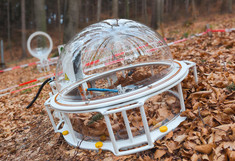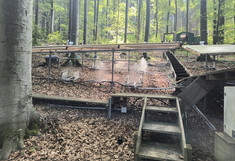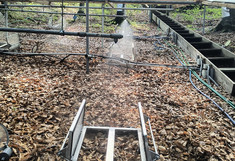DRAIN Station

The DRAIN Station
Open-air laboratory: The DRAIN experiment
Open-air laboratory: The DRAIN experiment
Forests play a key role in the exchange of climate-damaging gases with the atmosphere. The changes in precipitation distribution caused by climate change mean, among other things, that periods of drought and rewetting occur more frequently and with greater intensity; forest ecosystems react to these disturbances by changing their structure and function, with potential effects on the global climate.
In 2013, the long-term outdoor experiment DRAIN (“Ecological Impact of Droughts and Heavy RAINs on forest soils”) was launched in the Rosalia training forest. Here, the nutrient and water balance of the forest and the soil biodiversity in a typical beech stand under natural and climate change conditions are being investigated.
In the DRAIN experiment, precipitation is controlled by irrigation systems and so-called “rain-out shelters”, although the total amount of precipitation remains constant. “Rain Out Shelters” are specialized structures that keep precipitation away from certain areas to simulate drought stress. Since 2020, the deposition rate of nitrate has also been controlled in the DRAIN experiment.
Automated bottom flow chamber system
Automated bottom flow chamber system
It is an automated system for estimating the exchange rates of greenhouse and trace gases between the soil and the atmosphere. The system comprises twelve transparent chambers (diameter 52 cm) and a multiplexer that controls the opening/closing and sampling of the chambers.
The automated chamber system is connected to a multi-component gas analyzer. The multi-component gas analyzer makes it possible to estimate the exchange rates of greenhouse gases between soil and atmosphere in the field with an hourly temporal resolution. In the DRAIN experiment, soil drying and rewetting cycles are simulated to assess ecosystem responses to global change.
The gas analyzer is based on cavity ring-down spectroscopy technology to estimate concentrations of nitrous oxide (N₂O), methane (CH₄), carbon dioxide (CO₂) and ammonia (NH₃) with parts per billion (ppb) precision and water vapor (H₂O) with parts per million (ppm) precision.







